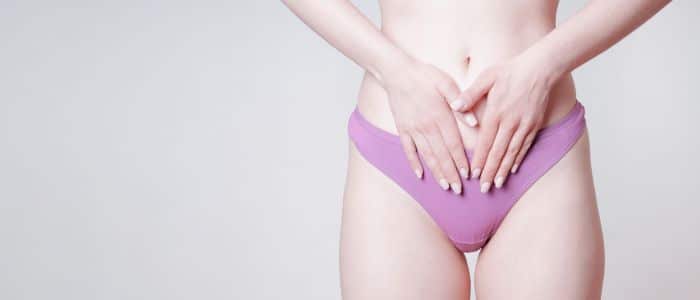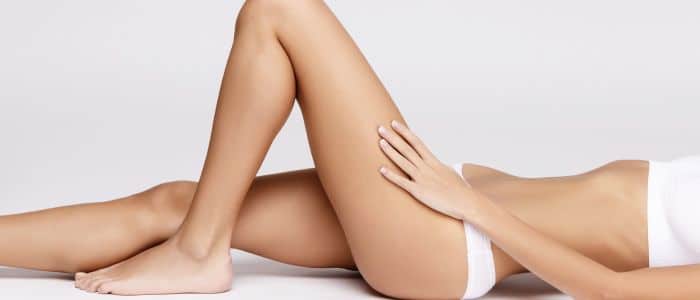
Monsplasty to Get Rid of FUPA
The term “FUPA,” an acronym for Fat Upper Pubic Area, has become increasingly common in today’s body-conscious society. This area, also known as the mons pubis, can be a source of discomfort and self-consciousness for many. Whether due to weight fluctuations, ageing, or post-pregnancy changes, an enlarged mons pubis can affect both women and men, leading to a lack of confidence and sometimes discomfort in tight clothing or during physical activities.
As a Consultant Plastic Surgeon, Anca Breahna, based in the UK, offers expert advice and surgical solutions for those looking to address this concern. In this blog, Anca will explore the causes of an enlarged FUPA, non-surgical and surgical treatment options including monsplasty, and what you can expect from these procedures.
What Is FUPA?
The term “FUPA” is an acronym for Fat Upper Pubic Area. FUPA has become a topic of increasing interest and concern when it comes to body aesthetics and health. This area, also known as the mons pubis, is located over the pubic bone and can vary in size from one individual to another. While a certain amount of fat in this area is normal and even necessary for protection and cushioning, excessive accumulation can lead to physical discomfort and emotional distress.
Causes of an Enlarged FUPA
Being aware of the causes of an enlarged FUPA is important in determining the most effective treatment approach. Different factors can contribute to this condition:
- Weight Gain and Obesity: This is one of the most common causes. When the body accumulates excess fat, it can be distributed in various areas, including the mons pubis. This distribution can be influenced by factors like diet, lifestyle, and genetics
- Pregnancy and Postpartum Changes: During pregnancy, the body undergoes significant changes, including weight gain and hormonal fluctuations. These changes can lead to an increase in fat deposits in the FUPA area. Additionally, postpartum hormonal shifts and weight changes can further contribute to the enlargement of this area
- Ageing: As we age, our bodies naturally undergo changes in fat distribution and skin elasticity. The decrease in collagen production and other age-related factors can lead to sagging skin and a more prominent FUPA
- Genetics: Genetic predisposition plays a significant role in where and how our bodies store fat. Some individuals may be genetically inclined to accumulate more fat in the upper pubic area
- Hormonal Imbalances: Conditions like polycystic ovary syndrome (PCOS) and other hormonal imbalances can lead to weight gain and fat accumulation in specific areas, including the FUPA
- Lifestyle Factors: Sedentary lifestyles, poor diet, and lack of exercise can all contribute to the development of a FUPA. These factors can lead to overall weight gain and fat accumulation in specific body areas
- Surgical Procedures: Certain surgeries, especially those involving the abdominal area, can alter the body’s shape and lead to fat accumulation in the FUPA
Psychological and Emotional Impact
An enlarged FUPA can have more than just physical implications; it can also significantly impact an individual’s mental and emotional well-being:
- Body Image Issues: Living in a society that often glorifies certain body types can lead to feelings of inadequacy and self-consciousness for those with a prominent FUPA
- Reduced Confidence: This can extend beyond body image, affecting overall self-esteem and confidence in both personal and professional settings
- Social Anxiety and Withdrawal: Some individuals may avoid social situations, especially those that involve swimwear or tighter clothing, due to embarrassment about their FUPA
- Impact on Intimacy: A prominent FUPA can also affect intimate relationships, where body image concerns might lead to a lack of comfort or avoidance of physical closeness
Physical Discomfort
Apart from the aesthetic concerns, an enlarged FUPA can also cause physical discomfort:
- Discomfort in Clothing: Tight-fitting clothes may cause chafing or irritation in the FUPA area
- Hygiene Issues: A larger FUPA can sometimes make maintaining hygiene more challenging, leading to skin irritation or infections
- Physical Limitations: In some cases, a significant FUPA can impede physical activity or certain exercises, affecting overall fitness and health
Non-Surgical Treatments for FUPA
For women who are hesitant about undergoing surgery or are looking for less invasive methods to address their FUPA concerns, there are several non-surgical options available. These treatments can be effective in reducing the size of the FUPA, although they may not offer the same level of results as surgical procedures like monsplasty. Here are some of the non-surgical solutions to get rid of FUPA:
Diet and Exercise
A balanced diet and regular exercise regime are essential when it comes to managing and reducing body fat, including in the FUPA area. While it’s true that spot reduction – losing fat in one specific area – is a myth, overall body fat reduction can naturally lead to a decrease in FUPA size.
- Balanced Diet: A diet rich in fruits, vegetables, lean proteins, and whole grains, while low in processed foods, sugar, and saturated fats, can help in overall weight management. It’s also important to maintain a healthy calorie deficit if weight loss is the goal
- Regular Exercise: Incorporating a mix of cardiovascular exercises, strength training, and core workouts can aid in burning fat and building muscle. Exercises that target the lower abdomen can help in toning the area, making the FUPA less noticeable
- Consistency is Key: It’s important to remember that changes won’t happen overnight. Consistency in maintaining a healthy lifestyle is crucial for long-term results
Cryolipolysis (Fat Freezing)
Cryolipolysis, commonly known as fat freezing, is a popular non-invasive procedure for fat reduction. It involves the use of controlled cooling to freeze and eliminate fat cells without damaging the surrounding tissue.
- Procedure: During the procedure, a device is placed on the target area, and fat cells are cooled to a temperature that causes their natural death while leaving surrounding tissues unharmed
- Effectiveness: It can be particularly effective for reducing localised fat deposits, such as those in the FUPA area
- Multiple Sessions: Depending on the patient’s goals and the amount of fat in the area, multiple sessions may be required
- No Downtime: One of the advantages of cryolipolysis is that it requires no downtime, allowing individuals to return to their daily activities immediately after the treatment
Radiofrequency Treatments
Radiofrequency treatments are another non-surgical option that can be effective in reducing the size of the FUPA. These treatments use energy waves to heat the deep layer of your skin, promoting fat reduction and skin tightening.
- Mechanism: The heat from the radiofrequency waves helps to break down fat cells and stimulate collagen production, leading to tighter, more toned skin
- Suitability: This treatment is particularly suitable for women who are close to their ideal body weight but want to address small areas of stubborn fat and loose skin
- Sessions Required: Multiple sessions are usually required to achieve noticeable results
- Minimal Discomfort: Radiofrequency treatments are generally well-tolerated, with minimal discomfort and no downtime
Often, a combination of these non-surgical treatments, along with lifestyle changes, can provide more visible results. For instance, someone might choose to undergo cryolipolysis to reduce fat in the FUPA area and then follow up with radiofrequency treatments to tighten the skin.
It’s important for women considering non-surgical treatments for FUPA to have realistic expectations. While these treatments can lead to noticeable improvements, they may not be as dramatic as surgical options. Consulting with a qualified professional, such as Consultant Plastic Surgeon Anca Breahna, can provide a clearer understanding of what each treatment can realistically achieve.
Surgical Options to Get Rid of FUPA – Monsplasty
For those seeking more significant or immediate results, monsplasty, also known as pubic lift, is a surgical option. This procedure is designed to reduce the bulge of the FUPA, resulting in a more aesthetically pleasing and comfortable pubic area.
What is Monsplasty?
Monsplasty is a surgical procedure that aims to reduce the size of and lift the mons pubis. This can be achieved through liposuction, removal of excess skin, or a combination of both. The procedure can be performed as a standalone surgery or as part of a more complex surgical plan, such as a tummy tuck.
Good Candidates for Monsplasty
The best candidates for monsplasty are women who:
- Are in good overall health
- Have realistic expectations about the outcomes of the surgery
- Are bothered by the size of their mons pubis
- Have excess skin or fatty tissue in the mons pubis area
How is the Monsplasty Procedure Performed?
The monsplasty procedure, as performed by Anca, is tailored to the individual needs of the patient. Here’s an overview of what to expect:
- Consultation: An initial consultation is crucial. Anca will discuss your concerns, evaluate your condition, and determine the best course of action
- Anaesthesia: Monsplasty is performed under general anaesthesia
- Incision: Depending on the extent of the surgery, an incision is made, either within the natural creases of the area or in a location that can be hidden by underwear
- Liposuction and/or Excision: Excess fat is removed through liposuction, and if necessary, excess skin is also excised
- Closure: The incisions are closed with sutures
- Recovery: Patients will need to follow specific post-operative instructions and may need to wear a compression garment
Monsplasty Recovery and Aftercare
Recovery from monsplasty varies depending on the extent of the surgery and the individual’s healing process. Generally, patients can expect:
- Downtime: A few days to a week off work
- Swelling and Bruising: This is normal and will subside over time
- Pain Management: Pain can be managed with prescribed medication
- Activity Restrictions: Strenuous activities should be avoided for a few weeks
Risks associated with Monsplasty Surgery
As with any surgical procedure, there are risks involved with monsplasty. These include infection, scarring, and dissatisfaction with the results. Choosing a qualified and experienced surgeon like Anca can help minimise these risks.
FAQs about FUPA and Monsplasty
Can Monsplasty be combined with other cosmetic procedures?
- Yes, monsplasty can often be combined with other cosmetic surgeries for better results. Common combinations include tummy tuck (abdominoplasty) and liposuction in other areas of the body to achieve a more harmonious overall appearance. During your consultation, Anca will discuss the best approach based on your individual goals and physical needs.
How long do the results of a monsplasty last?
- The results of a monsplasty are generally long-lasting. However, it’s important to maintain a stable weight, as significant weight fluctuations can affect the outcome. Ageing and gravity will also play a role over time, but the initial improvement is usually quite durable. Adopting a healthy lifestyle can help in maintaining the results for many years.
Is monsplasty covered by health insurance?
- In most cases, monsplasty is considered a cosmetic procedure and is not covered by health insurance. But if the procedure is deemed medically necessary – for instance, if the enlarged FUPA is causing hygiene issues or physical discomfort – some insurance plans might offer partial coverage. It’s important to check with your insurance provider and discuss this with your plastic surgeon.
What is the ideal recovery environment post-monsplasty?
- Post-monsplasty, it’s crucial to have a comfortable, quiet space where you can rest and recover. You should have easy access to everything you need, such as medications, water, and a phone. It’s also advisable to arrange for someone to assist you in the first few days following the surgery, especially for tasks that involve bending or lifting.
Are there any specific lifestyle changes I should make after monsplasty?
- After a monsplasty, it’s important to follow Anca’s advice regarding recovery, which includes avoiding strenuous activities and heavy lifting for a specified period. Long-term, maintaining a stable weight through a balanced diet and regular exercise is crucial. Smoking cessation is also recommended, as smoking can hinder the healing process and negatively impact the results of the surgery.
Further Reading about Body Surgery with Consultant Plastic Surgeon Anca Breahna
- Read more about Tummy Tuck Surgery
- Read more about Liposuction
- Read more about Mummy Makeover
- Read more about How to Get Rid of Abdominal Fat?
- Read more about Best Compression Garments after Tummy Tuck Surgery
- Read more about How to Get Rid of Excess Fat & Skin – Treatment Options
- Read more about Abdominoplasty and Pubic Lift: Addressing the Mons Pubis Area (FUPA)
Medical References about FUPA and Monsplasty
- How to get rid of fat in the upper pubic area (FUPA)
- FUPA: Fatty Upper Pubic Areas
- Monsplasty (Pubic Lift): Surgery, Recovery & Scars – Cleveland Clinic
- Monsplasty – ASPS



 Ms Anca Breahna, PhD, MSc, FEBOPRAS, FRCS (Plast) is a highly regarded Consultant Plastic Surgeon specialising in the field of Aesthetic and Reconstructive Plastic Surgery. Anca performs a range of
Ms Anca Breahna, PhD, MSc, FEBOPRAS, FRCS (Plast) is a highly regarded Consultant Plastic Surgeon specialising in the field of Aesthetic and Reconstructive Plastic Surgery. Anca performs a range of 